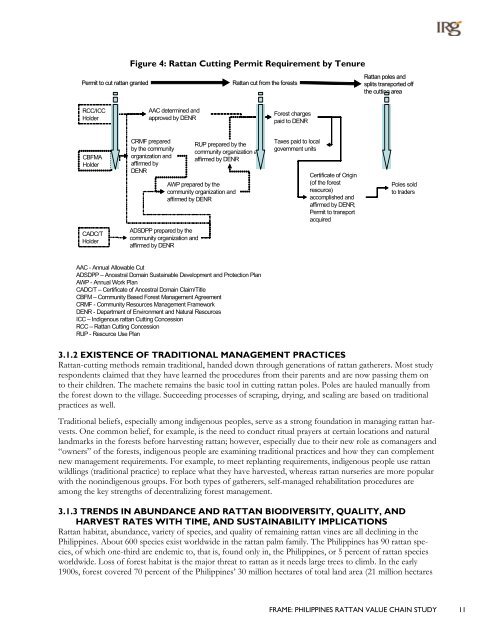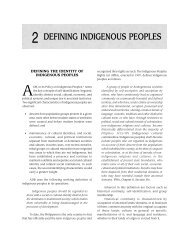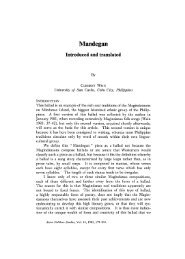PHILIPPINES RATTAN VALUE CHAIN STUDY - Aboutphilippines
PHILIPPINES RATTAN VALUE CHAIN STUDY - Aboutphilippines
PHILIPPINES RATTAN VALUE CHAIN STUDY - Aboutphilippines
Create successful ePaper yourself
Turn your PDF publications into a flip-book with our unique Google optimized e-Paper software.
Permit to cut rattan grantedFigure 4: Rattan Cutting Permit Requirement by TenureRattan cut from the forestsRattan poles andsplits transported offthe cutting areaRCC/ICCHolderAAC determined andapproved by DENRForest chargespaid to DENRCBFMAHolderCRMF preparedby the communityorganization andaffirmed byDENRRUP prepared by thecommunity organization andaffirmed by DENRAWP prepared by thecommunity organization andaffirmed by DENRTaxes paid to localgovernment unitsCertificate of Origin(of the forestresource)accomplished andaffirmed by DENR;Permit to transportacquiredPoles soldto tradersCADC/THolderADSDPP prepared by thecommunity organization andaffirmed by DENRAAC - Annual Allowable CutADSDPP – Ancestral Domain Sustainable Development and Protection PlanAWP - Annual Work PlanCADC/T – Certificate of Ancestral Domain Claim/TitleCBFM – Community Based Forest Management AgreementCRMF - Community Resources Management FrameworkDENR - Department of Environment and Natural ResourcesICC – Indigenous rattan Cutting ConcessionRCC – Rattan Cutting ConcessionRUP - Resource Use Plan3.1.2 EXISTENCE OF TRADITIONAL MANAGEMENT PRACTICESRattan-cutting methods remain traditional, handed down through generations of rattan gatherers. Most studyrespondents claimed that they have learned the procedures from their parents and are now passing them onto their children. The machete remains the basic tool in cutting rattan poles. Poles are hauled manually fromthe forest down to the village. Succeeding processes of scraping, drying, and scaling are based on traditionalpractices as well.Traditional beliefs, especially among indigenous peoples, serve as a strong foundation in managing rattan harvests.One common belief, for example, is the need to conduct ritual prayers at certain locations and naturallandmarks in the forests before harvesting rattan; however, especially due to their new role as comanagers and“owners” of the forests, indigenous people are examining traditional practices and how they can complementnew management requirements. For example, to meet replanting requirements, indigenous people use rattanwildlings (traditional practice) to replace what they have harvested, whereas rattan nurseries are more popularwith the nonindigenous groups. For both types of gatherers, self-managed rehabilitation procedures areamong the key strengths of decentralizing forest management.3.1.3 TRENDS IN ABUNDANCE AND <strong>RATTAN</strong> BIODIVERSITY, QUALITY, ANDHARVEST RATES WITH TIME, AND SUSTAINABILITY IMPLICATIONSRattan habitat, abundance, variety of species, and quality of remaining rattan vines are all declining in thePhilippines. About 600 species exist worldwide in the rattan palm family. The Philippines has 90 rattan species,of which one-third are endemic to, that is, found only in, the Philippines, or 5 percent of rattan speciesworldwide. Loss of forest habitat is the major threat to rattan as it needs large trees to climb. In the early1900s, forest covered 70 percent of the Philippines’ 30 million hectares of total land area (21 million hectaresFRAME: <strong>PHILIPPINES</strong> <strong>RATTAN</strong> <strong>VALUE</strong> <strong>CHAIN</strong> <strong>STUDY</strong> 11
















